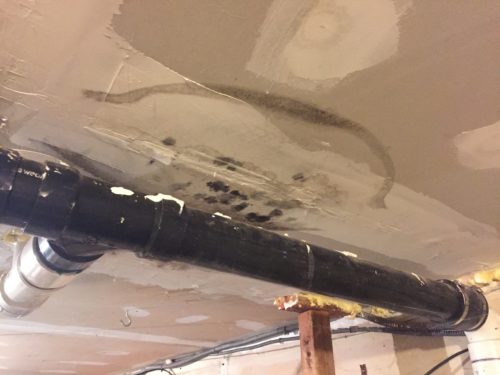Mold Creates a Business Risk for Building Owners

Mold growth on ceiling panel
Structural Damage and Health Issues Are Potential Threats
Microscopic mold spores cause problems when they interact with and digest moist surfaces. These spores will damage internal and exterior materials, finishes, furnishings, carpet, ceiling tile, insulation, wallboards and wood. Molds also cause health issues when they trigger allergic reactions in people. By controlling moisture and eliminating mold growth you can prevent asset damage, avoid costly investigations and remediation, and eliminate potential health risks.
Moisture Sources
• Plumbing leaks
• HVAC systems
• Window leaks
• Flooding
• Condensation on cold surfaces
• Poorly maintained drain pans
• Wet foundations
• Roof leaks
• Landscaping or gutters that direct water into or under a building
• Unvented combustion appliances
• High humidity spaces
Some moisture problems are associated with late 20th century construction practices that resulted in tightly sealed buildings and materials such as drywall that do not provide for adequate ventilation.
Prevention and Remediation
Delayed maintenance contributes to moisture problems in schools and commercial buildings. Routine inspections by maintenance personnel is essential for minimizing mold growth.
When moisture sources are identified, clean and dry the area within 48 hours of discovery. Any condition that may cause future mold growth issues should be immediately addressed. If the moisture problem has resulted in extensive fungal growth, an environmental investigation is recommended by OSHA.
It is a wise business practice to have your builder add mold investigation to their menu of annual preventative maintenance services that they perform for your building. If your builder discovers a problem, they will determine its magnitude and whether they are equipped to solve it. If not, they can recommend an experienced professional who will evaluate the underlying situation and recommend the proper corrective action.